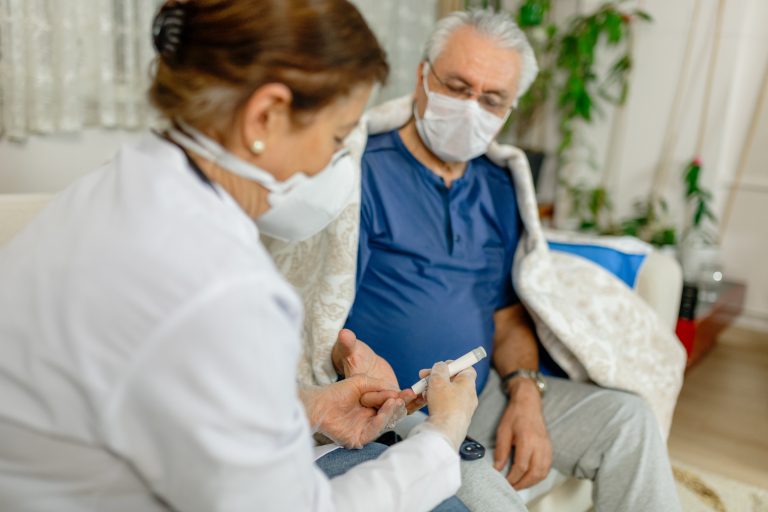
Researchers believe a combination of health factors and type II diabetes puts some patients at a higher risk than others for suffering more severe effects of COVID-19. A new study from the National Institute of Health (NIH) may explain why certain populations in the US are more prone to develop symptoms and illness from the SARS-CoV-2 virus than others.
Drs. Ranganath Muniyappa and Sriram Gubbi at the NIH have used previous data from similar coronaviruses, as well as the limited studies that are accessible for the current virus, to anticipate why and how SARS-CoV-2 behaves differently in different patients. While there is very limited information on this virus, this information shows that individuals with diabetes mellitus (DM), older age, hypertension, and severe obesity (BMI≥ 40 kg/m2) are more likely to be infected and are at a higher risk for complications and death. The authors stress that identification of clinical and biochemical parameters using multi-omic approaches that predict severity of COVID-19 in DM using large data sets is urgently needed.
The behavior of previous coronaviruses together with physiological characteristics of diabetes may help explain why people with diabetes have a higher risk of developing COVID-19, a respiratory disease caused by the novel coronavirus SARS-CoV-2.
While researchers currently have limited information on SARS-CoV-2, plasma glucose levels and DM have been confirmed as independent predictors for mortality and morbidity in patients with SARS, a similar coronavirus with similar features.
As the International Diabetes Federation explains on their website: “When people with diabetes develop a viral infection, it can be harder to treat due to fluctuations in blood glucose levels and, possibly, the presence of diabetes complications. There appear to be two reasons for this. Firstly, the immune system is compromised, making it harder to fight the virus and likely leading to a longer recovery period. Secondly, the virus may thrive in an environment of elevated blood glucose.”
Muniyappa and Gubbi believe potential cellular mechanisms that may increase the susceptibility for COVID-19 in patients with DM include a higher affinity of cellular binding and efficient virus entry; decreased viral clearance in the blood stream; diminished T cell function; increased susceptibility to hyper-inflammation and cytokine storm syndrome; and the presence of cardiovascular disease.
Approximately 10% of the United States population has diabetes, a metabolic disorder often associated with obesity and heart disease. Furthermore, more than a quarter of the US population older than 65 has diabetes mellitus. Diabetes was a major risk factor for two respiratory illnesses caused by similar coronaviruses: severe acute respiratory syndrome (SARS) in 2003 and Middle East respiratory syndrome (MERS) in 2012, and it, as well as older age, obesity, and high blood pressure increase the risk of hospitalization and death from COVID-19, which has now reached pandemic levels.
Previous research in human and animal models of diabetes suggests physiological traits exist that may explain why people with the disorder may be more likely to contract—or develop a more serious case—of COVID-19.
Potential factors include: increased expression of angiotensin-converting enzyme 2 in the lungs, heart, kidneys and pancreas, which SARS-CoV-2 binds to in order to enter human cells; elevated levels of furin, a protein that, through its normal function, may make it easier for viruses to enter the body; and impaired adaptive immunity, which includes sub-optimal functioning of white blood cells that fight infection and an exaggerated inflammatory response by the body towards COVID-19.
Both Muniyappa and Gubbi emphasize that it is of great importance to identify factors that can predict the severity of COVID-19 in people with diabetes and develop solutions to remotely monitor the health of this population.
“As the global pandemic unfolds and rapidly spreads across the U.S., social isolation measures will enable the transition [to provide remote patient monitoring], but there is an urgent need for basic and clinical investigations to address the many important and unanswered questions,” the authors wrote.
There is limited data in the US regarding co-morbidities and COVID-19 outcomes. Certain racial groups such as African Americans, Hispanics, Asians, and Native Americans are highly prone to develop DM and disparities in health care make these groups more vulnerable.













